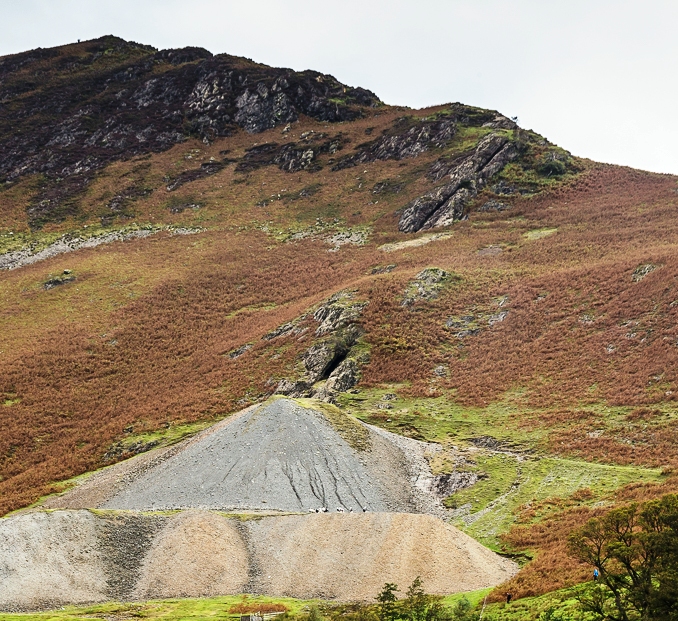
Announcement Date: May 18, 2019
EASY UNDERGROUND – A small but dedicated bunch of NMRS members joined up with other mine enthusiasts for a fascinating visit to Goldscope and adjacent mines in the Lake District. In the company of Mark Hatton from CATMHS, we were treated to a tour of the above and below-ground remains, together with an explanation of the fascinating history of this gem of a site. The story goes something like this . . .
From the vicinity of the historic Newlands Church you can look south towards the steep ridge of land known as Scope End, bounded on the east by Newlands Beck and on the west by Scope Beck. Mineral veins run roughly E-W (copper) and N-S (lead), and were known since antiquity with the ancients pecking at the surface exposures of the copper vein on both sides of the Newlands Valley. These open works were relatively modest affairs, and it was not until the arrival of miners from Germany in the reign of Queen Elizabeth the First that serious underground excavations took place.
The Germans were drafted in to look for copper which was desperately needed by the crown to alloy with silver, thereby making the supply of silver for coinage go that bit further (the Tudor version of quantitative easing), as well as for other uses such as making bronze used for naval cannon. The Germans, under the leadership of Daniel Hechstetter, were given free rein to mine wherever they wanted, with the profits returning directly to the crown. This situation caused problems with the landowners, particularly with Thomas Percy, Earl of Northumberland who ultimately paid with his life for his treason. The Germans brought with them the most advanced mining and smelting technologies of the age – apparently the Goldscope copper ore was particularly difficult to smelt – and as we were soon to witness – some awesome surveying skills . . .
Using only rudimentary hand tools, the painstaking process of tunnelling through the hard rock began at both ends of the St. George’s Level (the Grand Level). This in itself is an impressive accomplishment that took many years to complete. At one section there is a slight dog-leg in the tunnel which is believed to be a point where the two ends of the tunnel met – almost perfectly.
As well as access, St. George’s Level served another vital purpose – it was a key part of a hydraulic engineering scheme to power both the de-watering of the lower workings and also the dressing floors. A dam was constructed at the head of Scope Beck…
The full report and photographs can be found in the August 2019 newsletter.

